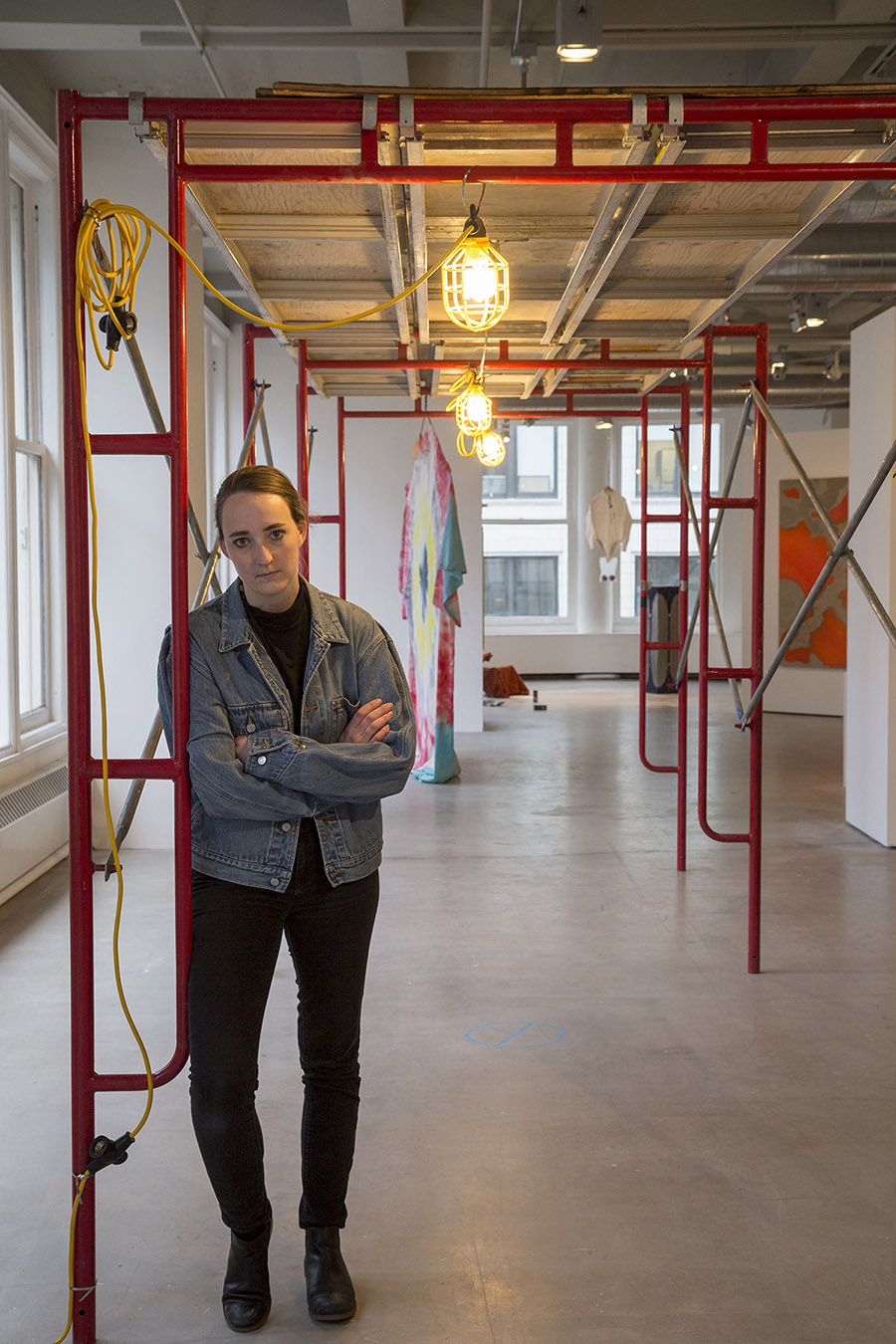
5 Questions profiles School of the Art Institute of Chicago (SAIC) students and faculty at work, in the school, and beyond. For this edition of 5 Questions, Taylor Hughes sat down with current student Elizabeth Housewright to discuss the development of Housewright’s practice, her time at SAIC, and her influences.
1. You’re graduating in May. What has your experience at SAIC been like?
I came to SAIC four years ago, in 2012. It was a bit of whirlwind. I didn’t have many expectations coming in, but it was a lot different than the Dallas suburb where I grew up — in every way, really. I worked really hard my freshman year, wanting to work on projects as soon as they were assigned. The first year program was really important to me, and I still keep in contact with my professors that year, they were really influential for me. I came in as a photo student but then quickly changed areas after taking some sculpture courses. It all kind of unfolded from there.
2. How has your work evolved since then?
Quite a few things have changed, but a lot remains the same. Entering SAIC, I came from a conservative, southern, Christian family, and those values drove a lot of what I did — much of my work has concentrated on these ideas. I was making work and writing around the ideas of Christian values and how they affected my upbringing through my freshman and sophomore year. When I was in my Junior [year] I wanted to move past my internal dialogue and make work not about my personal experience or story, but about my perspective on these value systems at large. I began doing research on sacred spaces and church architecture in the city of Chicago. That lead me to notice how many churches were in decay, and the large role maintenance and repair had in these institutions’ existence.
3. What churches have you been doing research on, and could you specifically speak about the one that has influenced your BFA piece?
All of the research really started with Second Presbyterian Church in the South Loop. I was living down there in 2014, when the church experienced a tragic incident. A gargoyle fell from the building’s facade, killing a woman below. She was with her fiancé and had two kids. I was actually on the bus in front of the church shortly after the incident, and saw a bit of the aftermath unfold. From there I began researching into St. Albert’s, in Pilsen, and more recently into Shrine of Christ the King, which just recently caught fire. Churches hold such a rich history in Chicago as community centers. You really can’t go anywhere in Chicago without seeing a steeple. It is almost an invisible history.
4. How have these histories impacted your practice and your latest piece in the BFA show?
My BFA Show piece is a set of scaffolding taken from Second Presbyterian Church after the gargoyle fell and struck the woman. The scaffolding was put up in response to her death. I hope to suggest that this structure, by being in front of the church for a length of time, has absorbed the aura of the story and the holiness that the church attempts to convey. By being placed by the church, however reluctantly, this structure becomes an extension of the church’s shelter. If what is inside and adorning the outside of the building is intended as a monument to provide a space for worship, the scaffolding serves that purpose too.
5. Who would you like to be stuck in an elevator with (who influences you?)
I’m sure my answer would change if I was asked tomorrow, but I would really like to meet Lucy Lippard. She is an amazing critic and thinker in women’s rights and the art world at large. She wrote a piece called “The Dematerialization of Art,” and it kind of put everything into perspective about the work I’m doing and the state of art. She has done so much to impact this world. Also, Andrea Frasier is amazing — she’s shaped so much of what I do. I would love to be stuck with both of them.







